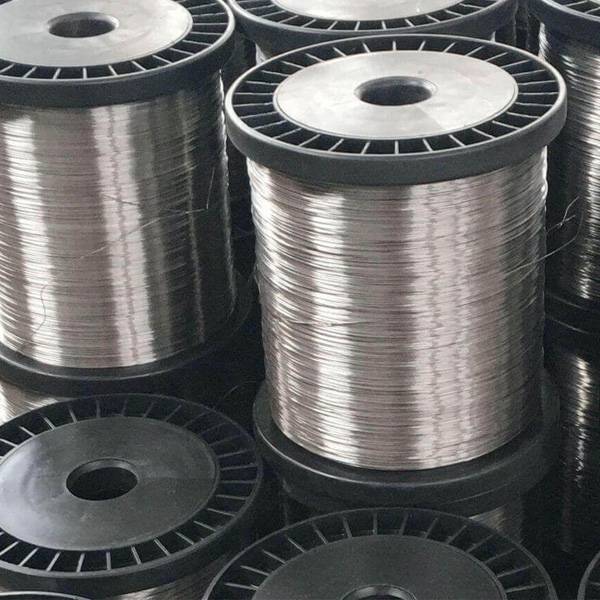Choosing the right filler metal is one of the most important steps in welding nickel-based alloys. The filler decides how well the joint performs under corrosion, heat, and mechanical stress. ErNiCrMo-11 also known as Hastelloy G-30 filler metal is one of the most effective options for welding important materials. It has superior corrosion resistance, strength, and weld quality. This blog talks about why ErNiCrMo-11 is the ideal choice for nickel alloy welding and what makes it special.
Overview of ErNiCrMo-11 Filler Metal
ErNiCrMo-11 is a nickel-chromium-molybdenum alloy filler metal designed for superior corrosion resistance. It is used to weld materials that are exposed to strong oxidizing and reducing conditions. Hastelloy G-30 and Alloy G-30 are two of the common trade names. The filler metal is made of a blend of materials that gives it both strength and resistance to corrosion. Nickel (44%) makes it strong and resistant to corrosion. Chromium (30.0% – 33.0%) makes it very resistant to oxidation, molybdenum (5.0% – 7.0%) makes the material stronger and less likely to pit. Copper (1.5% – 2.5%) makes it more resistant to sulfuric acid. Iron (13.0% – 17.0%) makes the material strong and stable. ErNiCrMo-11 is classified under AWS A5.14 ERNiCrMo-11 making it ideal for both GTAW (TIG) and GMAW (MIG) welding.
Key Mechanical Properties
ErNiCrMo-11 has exceptional mechanical properties that make it suitable for high-performance welding. It has a yield strength of about 320 MPa and a tensile strength of about 690 MPa, which means that welded joints can endure a lot of stress and deformation. It has good ductility as it can stretch about 40% without breaking. Even under high temperatures the alloy retains these mechanical properties, making sure that the structure stays strong when being used. It also doesn’t break down easily in environments that oxidize or reduce making it very durable in harsh environments. Its corrosion resistance in sulfuric, phosphoric, nitric and chloride-containing solutions is exceptional, which explains its use in industries such as chemical processing, marine systems, and pollution control units.
Compatibility with Nickel-Based Alloys
Choosing a filler with compatible metallurgy prevents cracking and corrosion at the weld joint. ErNiCrMo-11 matches well with many nickel-chromium-molybdenum alloys such as Hastelloy G-30, G-35, and G-3. Its balanced composition ensures strong fusion and minimal risk of weld defects. The filler forms a stable microstructure, maintaining corrosion resistance even in heat-affected zones. This makes it ideal for joining dissimilar metals too.
Welding Characteristics and Performance
Welders prefer ErNiCrMo-11 as it has a stable arc and a neat bead look. It makes clean welds with little spatter and good wetting, so there isn’t much cleanup to do later. The filler can handle hot cracking and porosity, which are common problems in nickel alloy welding. It also works well for similar and dissimilar metal joints like nickel alloys and stainless steel. To get the best results, keep the heat input under control and follow the right steps for post-weld heat treatment.
Applications and Industry Use Cases
ErNiCrMo-11 is used where durability and corrosion resistance are non-negotiable.
- Chemical and Petrochemical Industries: It is used in process equipment exposed to acids and chlorides, such as scrubbers and reactors. It ensures longevity and reduces maintenance in chemical processing systems.
- Power Generation: It is common in systems that remove sulfur from flue gas as the gas is very corrosive. The filler makes the material stronger and less likely to rust, even under continuous thermal cycling.
- Marine and Offshore Environments: Ideal for seawater applications, including piping systems and heat exchangers. It endures pitting and crevice corrosion in saltwater and humid conditions, making it reliable in offshore platforms and shipbuilding.
- Pharmaceutical and Fertilizer Plants: Ensures clean and long-lasting welds in pressure vessels and reactors. Its resistance to strong acids and oxidizing chemicals keeps operations safe and efficient, ensuring consistent output quality.
In each case, the filler ensures leak-free, durable welds that can handle both heat and corrosion.
Comparison with Alternative Filler Metals
Compared to other nickel fillers like ErNiCrMo-3 and ErNiCrMo-10, ErNiCrMo-11 performs better in aggressive acids. It has higher resistance to sulfuric and phosphoric acids and greater protection against pitting. While other fillers work for general corrosion environments, ErNiCrMo-11 remains the best option for extreme chemical processing setups. It offers a stronger barrier in mixed acid environments where other fillers might degrade faster.
Compliance and Quality Standards
ErNiCrMo-11 follows several global standards like AWS A5.14, ISO, and ASTM specifications. These ensure consistent chemistry and performance across batches. Always source from certified suppliers to ensure reliability. Consistent quality means fewer weld failures and better performance in demanding operations.
Conclusion
When it comes to welding nickel alloys ErNiCrMo-11 is the best filler metal. Since it is strong, resistant to corrosion and easy to weld it is an excellent option for industries that have to deal with harsh chemicals. It makes strong, long-lasting, and clean welds, whether it’s in power plants, chemical factories, or marine systems. Professionals rely on ErNiCrMo-11 as a filler metal when they need longevity.
